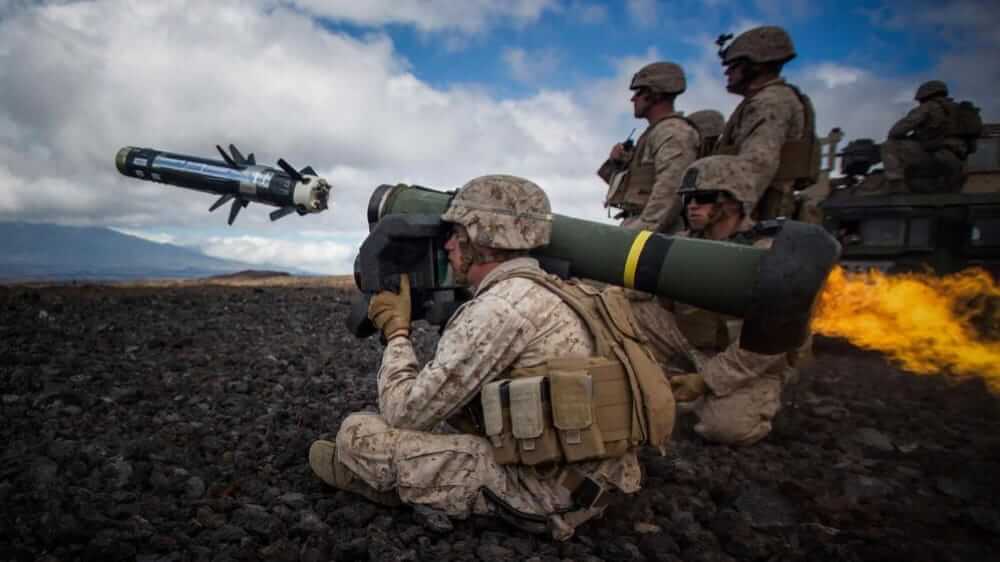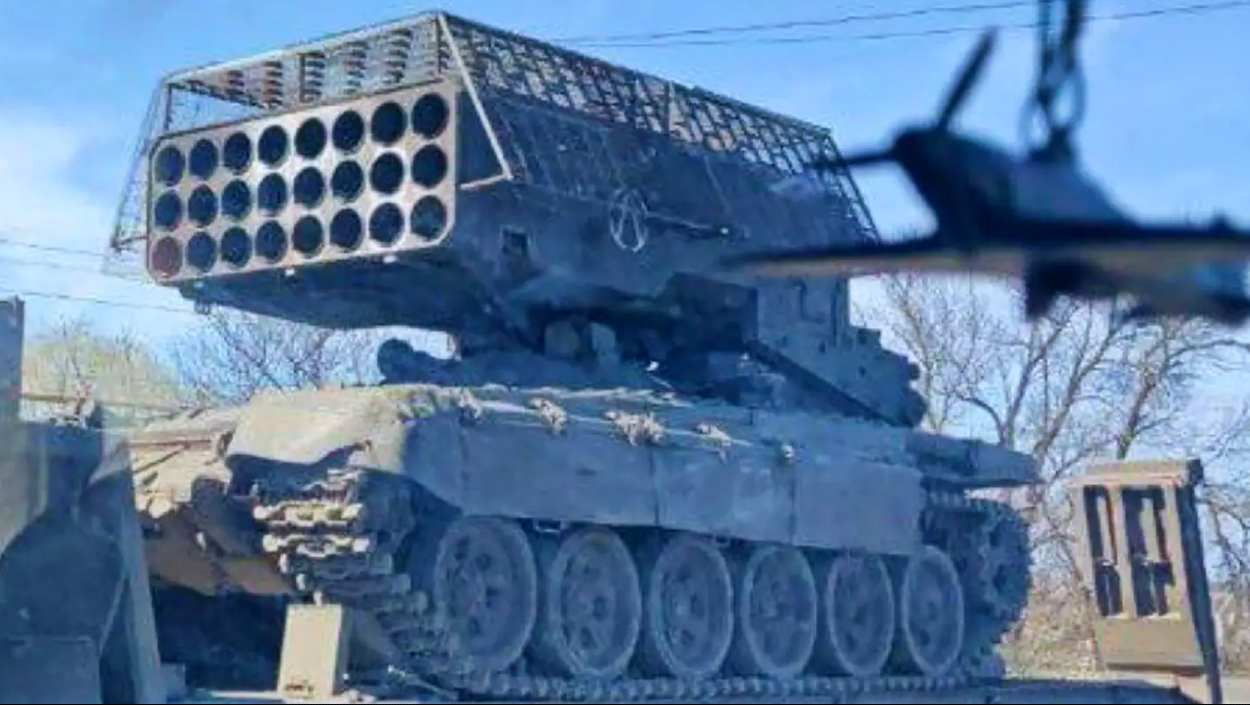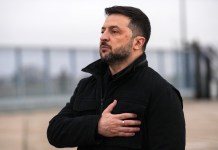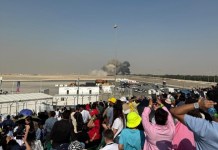According to a report published on May 29 by open-source intelligence organization Oryx, the number of visually verified Russian tank losses in Ukraine has reached a whopping 2000.
No F-16s For Ukraine? Despite US Nod, Not Even A Single Country Is Ready To Deliver Fighting Falcons To Kyiv
The list of damaged and destroyed tanks represents a precise, albeit conservative, representation of Moscow’s equipment losses.
“This list only includes destroyed vehicles and equipment of which photo or video graphics evidence is available. Therefore, the amount of equipment destroyed is significantly higher than recorded here,” says the report.
According to the latest findings, approximately 1,239 tanks have been destroyed, 106 tanks damaged, 113 abandoned, and 544 captured by the Ukrainian troops in combat.
Many images of severed turrets and burned-out wrecks of Russian tanks have made headlines, eroding the Russian Army’s image of invincibility.
Experts have contended that the threat posed by Ukraine’s anti-tank missiles, drones, and artillery renders Russian tanks vulnerable on modern battlefields, posing a very high risk to their crew.

According to a Center for Strategic and International Studies (CSIS) report, Russia lost between 1,845 to 3,511 tanks in Ukraine. There were heavy losses of its workhorse T-72B3 tank.
The report also noted that unprecedented tank losses had compelled the Russian military to pull out its Soviet-era tanks.
Visual evidence indicated that over 70-year-old tanks like the T-54 and the T-55 were pulled and deployed to the frontlines, signaling a setback to the Russian Army after losing most of its tanks to the Ukrainian counterfire.
Some military observers blame the vulnerability of Russian tanks owing to their design and structure in the context of modern combat, while others have blamed it on Russia’s political and military leadership, as well as constantly failing battlefield strategies that have contributed to the routing of its armored units.
How Did Russia Manage To Lose So Many Tanks?
Experts believe Russian overconfidence resulted in significant tank losses early in the conflict, particularly during the failed offensive on Kyiv, when a huge number of tanks and armored vehicles were obliterated on routes to the north of the city.
As the assault failed, numerous tanks were captured.
Some initial tank losses were attributed to the climate conditions that restricted the movement of tanks.
Military expert and Indian Army veteran Lt Col J.S. Sodhi (retd) told EurAsian Times, “Russia launched the offensive on Ukraine when winters were at its peak in Eastern Europe. Thus, with snow covering the entire ground in Ukraine, it was heavy with water content resulting in the ground being soggy. The Russians had no option but to restrict the movement of their troops and tanks on the metaled roads.
In armored warfare, emphasis is on the dispersed movement of tanks on large frontages cross country to maximize their effect and efficacy. However, this was not possible due to the ground conditions, which is one reason why these tanks became easy targets for the Ukrainian soldiers equipped with the latest Anti-Tank Guided Missiles (ATGMs).”
WATCH !!
A Russian T-80U Tank takes a hit from a Ukrainian FGM-148 Javelin, most likely fired by the 21st Motorized Infantry Battalion somewhere in Donetsk Oblast.#T80 #Tank #Russia #Ukraine #Javelin #antitank #MBT #armored pic.twitter.com/gTYyDFiyik— EurAsian Times (@THEEURASIATIMES) May 29, 2023
Enemy counterfire and dismounted infantry brandishing anti-tank guided missiles (ATGMs) have posed a massive threat to Russia’s armored force. These ATGMs essentially became the first symbol of the Ukrainian fight against the Russian invasion.
The Russian Army has reportedly equipped most of its tanks with Explosive Reactive Armor (ERA) which is a type of boxed armor that employs explosive force to deflect projectiles and defend itself from approaching missiles and rounds. However, Ukrainian ATGMs like Javelin and Stugna-P employ thermal sensors which allow them to penetrate the ERA.
In addition to lethal ATGMs, Ukraine also employed suicide UAVs to obliterate Russian tanks from above, where it was the most vulnerable.
In February this year, Ukrainian Marines shared a video compilation of multiple videos showing unmanned aerial vehicles (UAVs) targeting Russian tanks.
The 35th Marine Brigade uses kamikaze drones against Russian tanks. pic.twitter.com/aDqpHlQIMf
— NOELREPORTS ?? ?? (@NOELreports) February 13, 2023
Fearing frequent UAV attacks, Russia resorted to several other modes of protection for their tanks and artillery – like cope cages. Also called slat armor, bar armor, cage armor, and stand-off armor, these are unique defenses employed in heavy military vehicles to lessen the damage brought on by high-explosive anti-tank (HEAT) weaponry.
However, their effectiveness against modern firepower has been questioned by military experts who believe these structures have very limited impact in modern combat, as previously analyzed in-depth by EurAsian Times.
Besides an exemplary performance shown by Ukrainian defenders using cutting-edge ATGMs and modified UAVs, Russia’s battlefield tactics have been flagged as the most important factor in the massive tank losses accrued by its Army.
For instance, similar to its tank assault on Kyiv last year, the Russian military marched into Ukrainian positions in Vuhledar, costing them more than 100 armored vehicles. It was one of the biggest battlefield debacles for the Russian Army in the ongoing conflict.
According to several reports and observations by experts, Russian tanks have been struck by Ukrainian troops using anti-tank Javelin missiles while they were loitering in open fields without much support or fire protection.
It’s not the Groundhog Day. Just Russians mine-clearing the area with their MBTs and trying to find every single mine placed by Ukrainian troops near Vuhledar.
I have not enough hands to facepalm this. #Ukraine #Vuhledar pic.twitter.com/pw9oFNykNs
— (((Tendar))) (@Tendar) February 12, 2023
They’ve also been observed driving directly into minefields before getting blown up, sometimes one after another.
Another important error flagged by military experts was the Russian military’s failure to use a combined-arms strategy to protect its tanks, which would have added support and integrated its armor with other units. On several instances where its tanks were destroyed, they were reportedly devoid of any mechanized infantry support.
However, after mounting losses that have led to the Russian Army losing face domestically as well as against Ukraine, Russia is believed to have adjusted its battlefield strategies to streamline tank operations and minimize losses.

Preventing Tank Losses
A report on Russia’s changing military tactics published by UK-based think tank RUSI has given perspective on how Russia has restricted its tank operations to cope with staggering losses.
Titled “Meatgrinder: Russian Tactics in the Second Year of Its Invasion of Ukraine,” the report states that Russian tank operations are suffering due to tactical changes and force protection.
According to the report, Russia has upped using ERA on its tanks, even on surfaces that do not need ERA protection. The report’s authors said Ukrainian ATGM operators informed them that, on many occasions, they struck Russian tanks but could not knock them out.
Although ERA is quite powerful, the Ukrainians are aware of where a Russian tank’s weak points are so that they can kill it in one shot. For example, spots between the turret and the front glacis plate, as well as the tracks—which can be hit for a “mobility kill” that could force Russian operators to abandon the vehicle—are critical.
“This is because a tank’s mobility is considered the best means of protection against artillery, and its survivability is compromised if it is immobilized,” the report said. It also observed that there had been battles in the wake of the incident to seize abandoned vehicles.
A column of the latest #Russian tank T-90M "Proryv" is somewhere at the front #Donbass pic.twitter.com/KrehgxDGpp
— Middle East Update (@islamicworldupd) March 25, 2023
The Russians have become more careful with driving their tanks into Ukrainian formations. “The Russian use of armor has evolved significantly during the conflict,” the RUSI report said.
As part of a new strategy, tanks are primarily used for artillery and fire support as well as to raid Ukrainian positions, although Russia has occasionally used some of its older tanks to support breach operations in urban combat.
Despite the fact that this strategy helps to cut down on casualties, it also hinders Russia from using the firepower, mobility, and shock value that tanks bring to the table to deliver breakthroughs and exploit advances on the battlefield, hence reducing Russia’s overall offensive capacity.
Most importantly, the Russians have modified their tanks to conceal them from anti-tank-guided missiles. Anti-thermal equipment is being added to vehicles and defensive positions.
Anti-tank guided missiles, which employ infrared sensors to lock onto a target, are less effective due to the altered engine deck and heat plume.
Also, the Russians are altering the hours of the day they engage in combat. Russian forces have discovered that fighting at dusk and dawn when the vehicle temperature is most similar to the ambient temperature of the surroundings is advantageous when trying to camouflage their armor from Ukrainian missile systems.

According to the report, this circumstance is referred to as a “thermal crossover,” and at such moments, Russian tanks and other armored vehicles are harder to detect through thermal imagery, making them significantly less vulnerable to Javelins and other weapons.
The Russians, according to the report, have somewhat succeeded in “a significant decrease in the probability of kill from several ATGM types,” but they were only able to do so by “imposing a range of tactical constraints” on their armor, which eventually reduced the effectiveness of their tanks.
A Ukrainian counteroffensive using the Western tanks delivered to Kyiv is anticipated to be launched soon. This would further challenge the Russian Army, which is still coping with the massive losses of its war machines.
- Contact the author at sakshi.tiwari9555 (at) gmail.com
- Follow EurAsian Times on Google News




